Isabella Bradford's Blog, page 53
July 7, 2016
Friday Video: An Automaton in the Shape of Diana on Her Chariot, c1610
Isabella reporting,
As you all know, Loretta and I have a weakness for early automatons - those elegant, ingenious clockwork wind-ups made of precious metals and jewels that were the toys of the rich and titled in the 17th-19th centuries. (See more examples here , here , here , and here .)
Made in Augsburg, Germany around 1610, this automaton is particularly fascinating. Not only is it a fantastic clock, with the ancient goddess Diana rolling her eyes, taking aim, and finally shooting her arrow, but her "chariot" can travel under its own power, too. According to the museum's description:
"Probably drawing inspiration from contemporary prints, the clock portrays the Roman goddess of the hunt, Diana, on a chariot pulled by two leopards. Precious clocks like this were collaborative enterprises among goldsmiths, sculptors, clockmakers, engravers, and even cabinetmakers. They were important status symbols in European courts, representative of the most cutting-edge technology of their time, and they were often used as diplomatic gifts. This clock...is also a table carriage, a lavish form of tabletop entertainment during banquets. This short video unveils the highly sophisticated inner mechanism of the clock, delicate parts that are otherwise hidden from view and are remarkably still in tact. The video also captures the mesmerizing movements and sounds the clock makes when wound, revealing the creative and technical mastery behind this ingenious work of art."
I feel sure that someday Loretta or I (or maybe each of us) are going to write that scene when the gilded chariot travels down the dining table....
Automaton Clock in the Form of Diana on her Chariot, maker unknown, c1610, Yale University Art Gallery.
Published on July 07, 2016 21:00
July 6, 2016
Fashions for July 1866
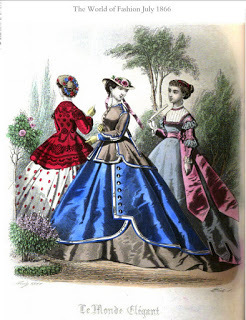 July 1866 Fashions
July 1866 Fashions
Loretta reports:
Last time I complained about the dearth of 1840s and 1850s ladies magazines, especially for England. While readers have generously pointed me to a treasure trove of fashion plates, we’re still not turning up whole magazines for these decades online.
The 1860s and 1870s are another matter entirely. For these decades Google Books offers numerous editions of The World of Fashion as well as the London and Paris Ladies’ Magazine of Fashion (which may be the same magazine under a different name, as happened often enough) and others, complete with color fashion plates.
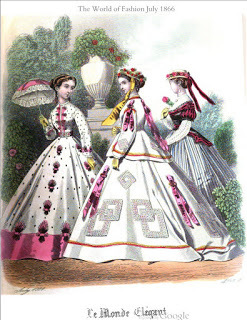 July 1866 Fashions
What I’m noticing is a difference in shape of the skirt. According to Cunnington’s
English Women’s Clothing in the Nineteenth Century
, crinolines were going out of fashion, but they weren’t going out instantly. So the skirts are cut a bit differently from before, and look more triangular than bell-shaped.
July 1866 Fashions
What I’m noticing is a difference in shape of the skirt. According to Cunnington’s
English Women’s Clothing in the Nineteenth Century
, crinolines were going out of fashion, but they weren’t going out instantly. So the skirts are cut a bit differently from before, and look more triangular than bell-shaped.Of the five sets of fashion plates for July, I settled on the first two. To see more, simply click on the links to the first two, and turn pages. You'll find a pair of beautiful ball dresses on some strangely drawn women, especially one, whose head seems to be attached to the wrong body.
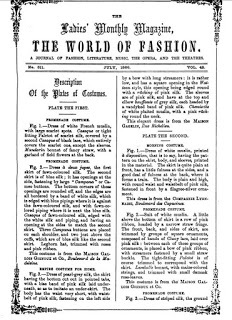 Plate 1 & 2 description
Plate 1 & 2 description
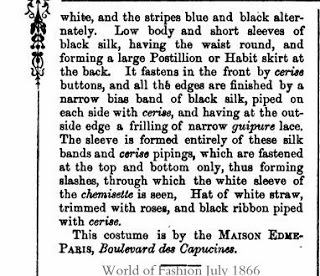 Plate 2 description cont'd
Plate 2 description cont'd
Clicking on the image will enlarge it. Clicking on the caption will take you to the source, where you can learn more and enlarge images as needed.
Published on July 06, 2016 21:30
June 29, 2016
Fourth of July Break
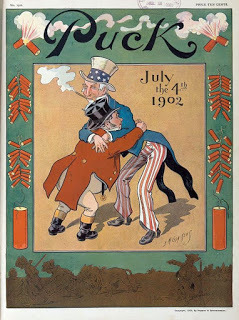 July the 4th 1902
Loretta & Isabella report:
July the 4th 1902
Loretta & Isabella report:Monday the 4th of July is Independence Day, the anniversary of the day we Yanks declared our independence from Great Britain, and then had a big fight about it.
Happily, those hostilities are long behind us. Nowadays, our relationship resembles the main image in the Puck illustration. In 1902 Uncle Sam embraced John Bull. More than a century later, we’re still not shooting at each other, but continue to embrace our separated-by-a-common-language friends across the pond.
We in the U.S. will celebrate the anniversary with fireworks. And barbecues. And a lot of flag waving.
The Two Nerdy History Girls will be taking a long weekend to spend time with our families. We’ll return on Tuesday with our regularly scheduled blogging.
To our readers in the U.S. we wish a happy Fourth, complete with glorious fireworks. To our friends elsewhere: If you haven’t anything official to celebrate over the next few days, make something up and have a party.
Image: Puck, July the 4th 1902 , courtesy Library of Congress Prints and Photographs Division Washington, D.C. 20540 USA.
Clicking on the image will enlarge it. Clicking on the caption will take you to the source, where you can learn more and enlarge images as needed.
Published on June 29, 2016 21:30
June 27, 2016
The Stearns Tavern Dodges the Wrecking Ball
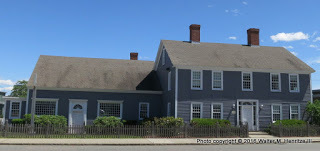
Loretta reports:
In Worcester, you can’t just knock down an old building when you feel like it (except if you are certain unspeakable people who shall remain nameless). Historic structures get a one year stay of execution, unless the powers that be grant a waiver. Very often the waiver is granted and the building vanishes, and all we can do is take pictures to remember it by.
Recently, and much to our surprise, Our Lady of Mount Carmel Church, about which I wrote not long ago , got a one year stay of execution, though the odds of its surviving are not great.
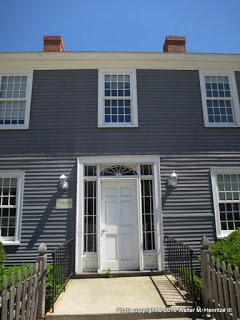
The news is better about an old tavern in the town.
The Stearns Tavern is one of those buildings I must have passed a thousand times, in a car and on foot, without more than a glance. It was, until recently, a bank. Only in the last couple of years did I learn was one of Worcester’s oldest structures, dating back to about 1812. (I know: in England that’s practically yesterday, ultra-modern, but this is the U.S.)
We didn’t hold out much hope when the Stearns Tavern got its one year reprieve—but lo and behold, thanks to efforts by the city and several private companies, the tavern will be preserved. It’s moving, for the second time, to a more attractive location, and will get a new life as the centerpiece of a park.
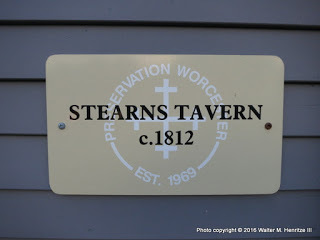 For more about the tavern, here are some links:
For more about the tavern, here are some links:Just the facts, ma’am here .
A more detailed story with lots of photographs here .
And the rescue story here .
Despite diligent searching, I’ve been unable to locate older images for a compare and contrast. In the meantime, these photographs are courtesy the indefatigable Walter M. Henritze III.
Please click on images to enlarge.
Published on June 27, 2016 21:30
June 26, 2016
See-Through Summer Dresses for 1782?
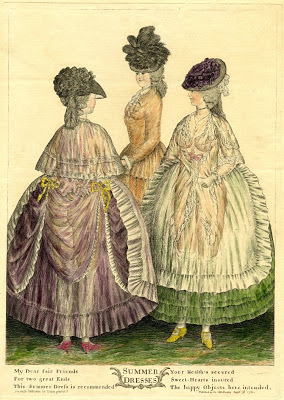 Isabella reporting,
Isabella reporting,Satirical prints were in their glory in London in the late 18th and early 19th centuries, and for us researching Nerdy History folks, prints can be a wonderful source of information about society and fashion at the time. We just have to keep in mind that they're satire, not fashion plates.
This print is a perfect example. Glance at it quickly, and it looks like countless other prints showing the latest fashions, with three ladies showing both front and back views plus elegant hats and hair. The title of the print, Summer Dresses, makes it sound as if it's exactly that, too.
But if you look a little more closely (click on the image to enlarge it), you'll see that the women are combating warm weather by wearing less - a great deal less. They've left off their stays (corsets) and most of their other undergarments. The fabric of their gowns and aprons is so sheer that their bodies are plainly revealed (which makes those elaborate hats, stockings, and shoes a little strange by comparison.)
But it's a joke. Really. No London ladies were dressing like this. The light-hearted rhyming caption makes it clear:
My Dear fair Friends
For two great Ends
This Summer Dress is recommended.
Your Health's secured
Sweet-Hearts insured
The happy Objects here intended.
In other words, by parading about like this, ladies will not only stay cool and comfortable, but attract sweethearts galore.
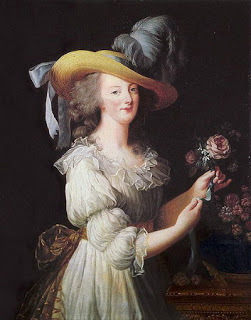
But as is often the case with satirical prints, there's a grain of truth, however small, at work here. Over in France, Queen Marie-Antoinette was causing a sensation by wearing a new kind of dress dubbed the chemise a la reine, right. This was a simple, unstructured dress made of white, light-weight cotton muslin that was a complete turnaround from the stiff silks and brocades, worn over rigid stays, that had dominated women's fashion for most of the century.
Although the chemise a la reine still looks like a lot of dress to modern eyes, in the early 1780s it was considered scandalously insubstantial. To the English satirical artists - the new styles were ridiculous, revealing, and above all FRENCH. See-through dresses were an easy target, and one sure to sell to the stalwart English print-buyers who must have delighted in the scantily clad women of Summer Dresses.
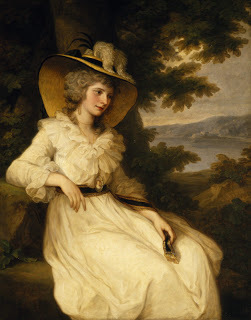
But such prints didn't stop Englishwomen from embracing the new muslin dresses for themselves. By 1785, fashionable aristocrats like Lady Elizabeth Foster, lower left, were posing for portraits wearing the English version of the chemise a la reine. Change was definitely in the air....
Thanks to Neal Hurst for recently posting Summer Dresses on his Facebook page.
Upper left: Summer Dresses, by an anonymous artist, London, 1782, British Museum.
Right: Portrait of Marie-Antoinette, Queen of France, by Elisabeth Vigée-Lebrun, 1783. National Gallery of Art, Washington, DC.
Bottom left: Portrait of Lady Elizabeth Foster, by Angelica Kauffman, 1785, Ickworth House, National Trust.
Published on June 26, 2016 17:00
June 25, 2016
Breakfast Links: Week of June 20, 2016
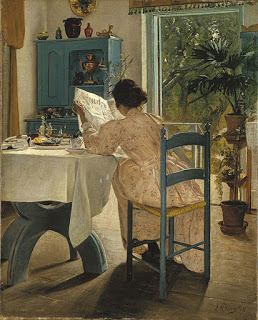 Breakfast Links are served - our weekly round-up of fav links to other web sites, articles, blogs, and images via Twitter.
Breakfast Links are served - our weekly round-up of fav links to other web sites, articles, blogs, and images via Twitter.• Image: Miniature corset , 1890s, most likely used as a salesman's sample.
• Elizabeth Simmonds, who had a lucky escape on the dissecting table , 1826.
• The polyamorous Christian Socialist utopia that made silverware for proper Americans.
• Archibald MacPheadris and his room: a Baroque merchant's house in Portsmouth, NH, 1716.
• How fashion magazines talked in the 1930s.
• The route of Don Quixote : following in the footsteps of one of the greatest novels of all time.
• Image: Edwardian postcard: Suffering to achieve the ideal beauty , yet mocked for the fakery.
• How England became a nation of tea-drinkers .
• Horn and Hardart automats : redefining lunch time, dining on a dime.
• Six New England ghost towns .
• Gout, king's evil, plague in the guts, murder: how people died in 17thc London.
• The Elizabethan garden: plants that Shakespeare would have known well.
• Image: Convenience store in St. James's Park, complete with cow , c1900.
• How two 18thc female pirates became BFFs on the high seas.
• America's obsession with presidential hair .
• A brief history of goldfish globes and goldfish hawkers.
• What she left behind .
• Video: A favorite of dandies: the now-long-lost spat .
• How "domestic" was women's work, 1500-1700?
• A three-year-old's shoes are a powerful monument to the General Slocum tragedy of 1904.
• Image: Judy Garland stood 4'11", but not in these - created for her by Salvatore Ferragamo in 1936 (and still sold today.)
• Fifteen women who deserve their own biopics.
• Be honest: can you really tell left from right ?
• And then there were ten: surviving landmarked Dutch houses in Brooklyn, NY.
Hungry for more? Follow us on Twitter @2nerdyhistgirls for fresh updates daily.
Above: At Breakfast by Laurits Andersen Ring. Private collection.
Published on June 25, 2016 14:00
June 23, 2016
Friday Video: Grace Kelly's Royal Wedding, 1956
Isabella reporting,
Since June is the month of weddings, this seemed like the perfect Friday video for the season. The wedding of Oscar-winning American actress Grace Kelly to Ranier III, Prince of Monaco, had everything that celebrity-watchers crave: Hollywood and European royalty, a beautiful bride who gave up her movie-star existence for the love of her handsome prince. The fairy-tale analogies were unavoidable, and the world couldn't get enough. Beneath the near-constant glare of media attention, the two were wed in Monaco in a civil service on April 18, 1956, and in a religious ceremony a day later on April 19.
This short newsreel feature from British Pathé captures both the glamour and the frenzy that surrounded the wedding. What struck me most about it, however, was the breathtaking beauty of Grace Kelly, both as a woman and as a bride. She's also remarkably solemn, and I hope for her sake that later that day she was as happy and joyful as a bride should be, once she and her new husband were alone together away from the cameras.
If you received this post by email and are seeing a black box or empty space where the video should be, please click here to view the video.
Published on June 23, 2016 21:00
June 22, 2016
Before Refrigerators: The Ice House
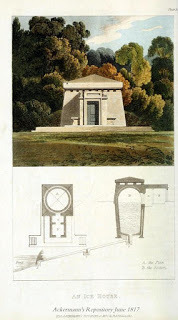 Ice House 1817
Loretta reports:
Ice House 1817
Loretta reports:Ice houses weren’t as rare in England as the excerpt from Ackermann's Repository for June 1817 makes one believe. Neither were baths, for that matter. And London did have its share of both. In the 17th century, King Charles II had not only one, but six ice houses built, including one for his mistress the Duchess of Cleveland.* You can read more about ice houses here , here , and here .
Photo of Duchess of Cleveland’s ice house scanned from Christopher Symon Sykes's Private Palaces .
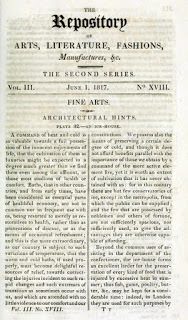 Ice House Described
Ice House Described
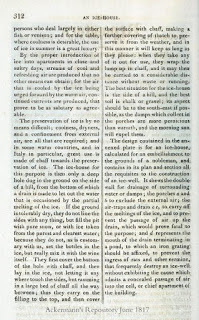 Ice House Described
Ice House Described
 *If you'd like to learn more about this remarkable woman, I highly recommend Susan Holloway Scott's (aka the other NHG)
Royal Harlot.
*If you'd like to learn more about this remarkable woman, I highly recommend Susan Holloway Scott's (aka the other NHG)
Royal Harlot.
Clicking on the image will enlarge it. Clicking on the caption will take you to the source, where you can learn more and enlarge images as needed.
Published on June 22, 2016 21:30
June 20, 2016
Watch the Mantua-Makers Create a c1774 Dress in a Day
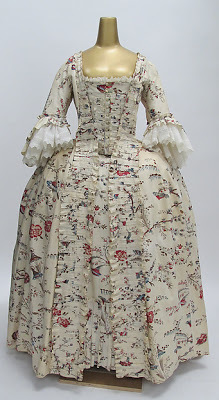 Isabella reporting,
Isabella reporting,Today is the longest day of the year. If you're an 18thc seamstress whose workday is determined by the light of the sun, it's a rare opportunity to make an entire dress in a day.
At least that's what will be happening today in the Margaret Hunter shop in Colonial Williamsburg . Beginning at 7:00 am and ending around 6:00 pm, a length of lovely printed cotton chintz will be transformed into a gown and petticoat much like robe à la française, left. The seven women with the flying needles will be Janea Whitacre, mistress of the trade; Sarah Woodyard, journeywoman; Abby Cox, apprentice (all part of the Historic Trades program at Colonial Williamsburg); Rebecca Starkins, Adi Harris, and Kaila Temple, summer interns in the shop; and Norah Worthington, resident costumer at the Baltimore School for the Arts, who will participate as part of a professional development exchange program.
Anyone in town with a Colonial Williamsburg pass will be able to visit the shop today and watch. For the rest of us, the dress's progress will be shown today on the Historic Trades Facebook page here . I'm told there will be streaming video as well as still photographs to show each step of pinning, cutting, and stitching to create the finished gown by the end of the day. Everything will be done entirely by hand, as it would have been done in the 18thc. (Just keep in mind that all this will be happening in Virginia time, in the Eastern time zone.)
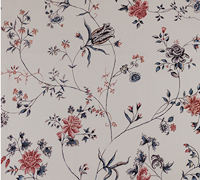
For those of you interested in sewing along at home (you know who you are), Colonial Williamsburg is also offering this cotton chintz, right, exclusively on their website. It's a reproduction of an 18thc textile in their collection; for more information or to order, see here .
While making a dress in a day sounds like a grand-standing slogan, it wasn't that uncommon in the Georgian era. If a lady wanted a new gown to wear the day after tomorrow and had the money to pay for it, a mantua-maker and her seamstresses would be happy enough to oblige.
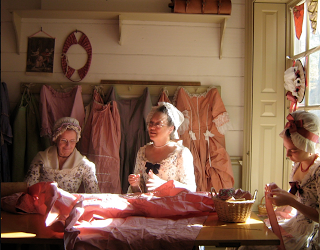
While suitable for drinking tea, calling on friends, visiting shops, or attending church, a gown and petticoat like this one wouldn't come cheaply. This is clothing for a wealthy, fashionable woman, or perhaps a successful woman working in the fashion trade who needs to impress her customers. Imported from India, cotton chintz printed in multiple colors was a luxury fabric, and could cost ten to fifteen shillings a yard, with a gown like this one requiring about ten yards of fabric.
By comparison, the cost of labor would only be about ten shillings. Labor was cheap in the 18thc, and that charge of ten shillings would be a set price, the same whether one seamstress worked for three days, or seven worked for one. The total dress could cost roughly £5-£8. The wages for a common seamstress? One-and-a-half shillings for a twelve hour day.
You can also watch a vodcast of the Colonial Williamsburg mantua-makers create a previous dress in a day: part one and part two .
Top left: Robe à la française, French, 1760s, Metropolitan Museum of Art.
Bottom left: Photograph of Margaret Hunter Shop © Susan Holloway Scott.
Published on June 20, 2016 21:00
June 19, 2016
Staying Happily Married for a Side of Bacon
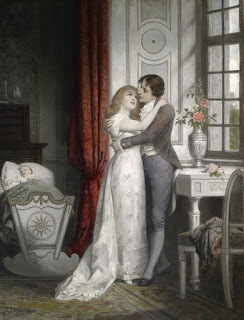 Schweninger, Happy Family
Loretta reports:
Schweninger, Happy Family
Loretta reports:One of my favorite tomes on my shelves is The Every-Day Book; or Everlasting Calendar of Popular Amusements etc., which the prolific William Hone published in 1826, and which was reprinted for many years thereafter.
In the entry for 20 June, he brings to our attention the custom of awarding a flitch (side) of bacon to a couple able to prove marital harmony a year and a day after the wedding.
The rather saccharine Victorian era image above left, a romantic imagining of a scene from the early 1800s, certainly is a strong contrast to Gillray's before and after matrimony images.
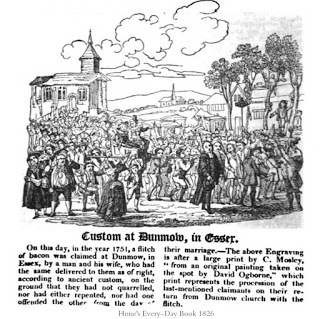 Dunmow Custom
Dunmow Custom
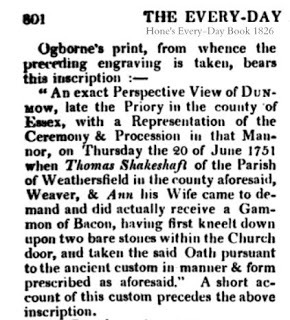
Image: Carl Schweninger, Happy Family, via Wikipedia.
Clicking on the image will enlarge it. Clicking on the caption will take you to the source, where you can learn more and enlarge images as needed.
Published on June 19, 2016 21:30



